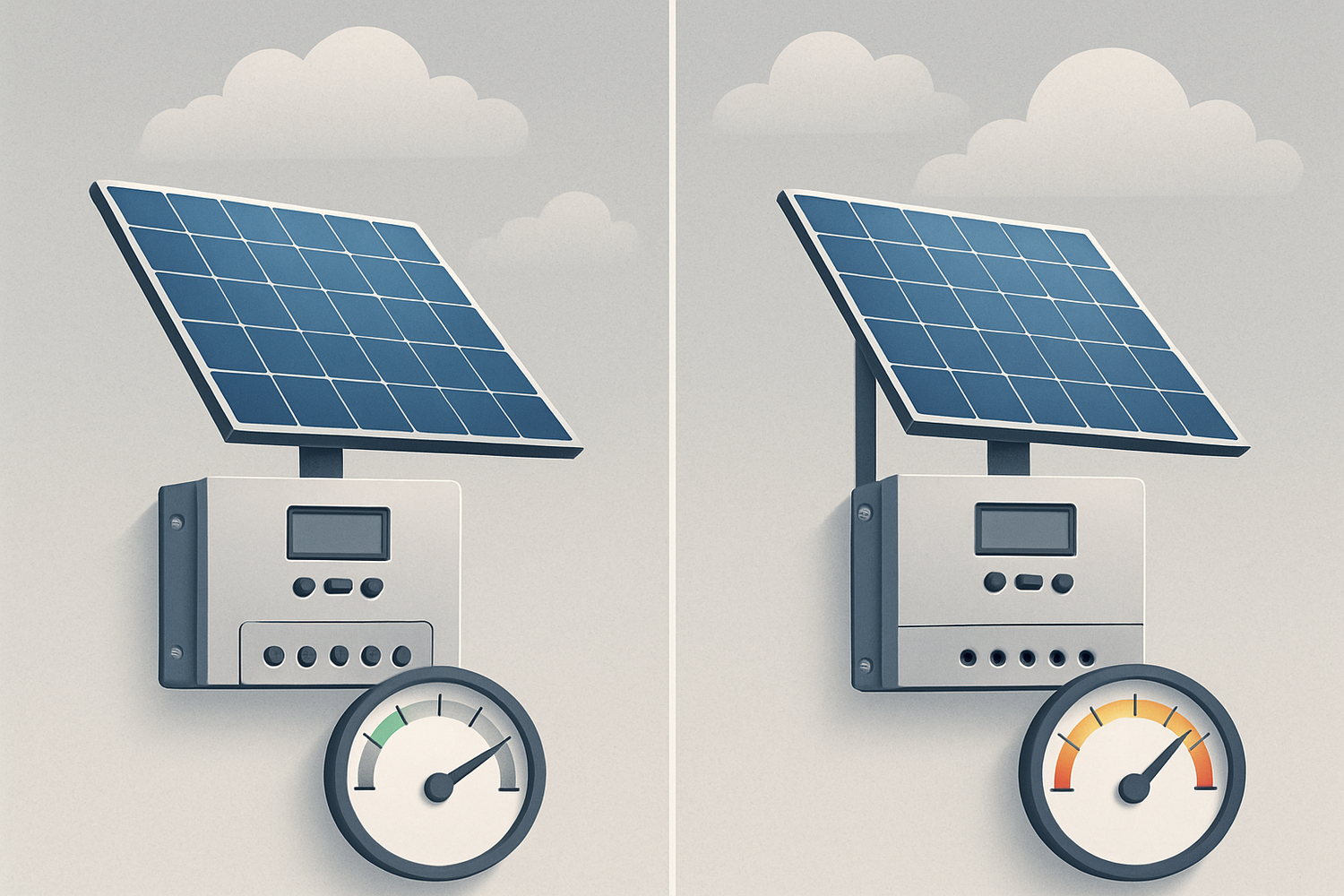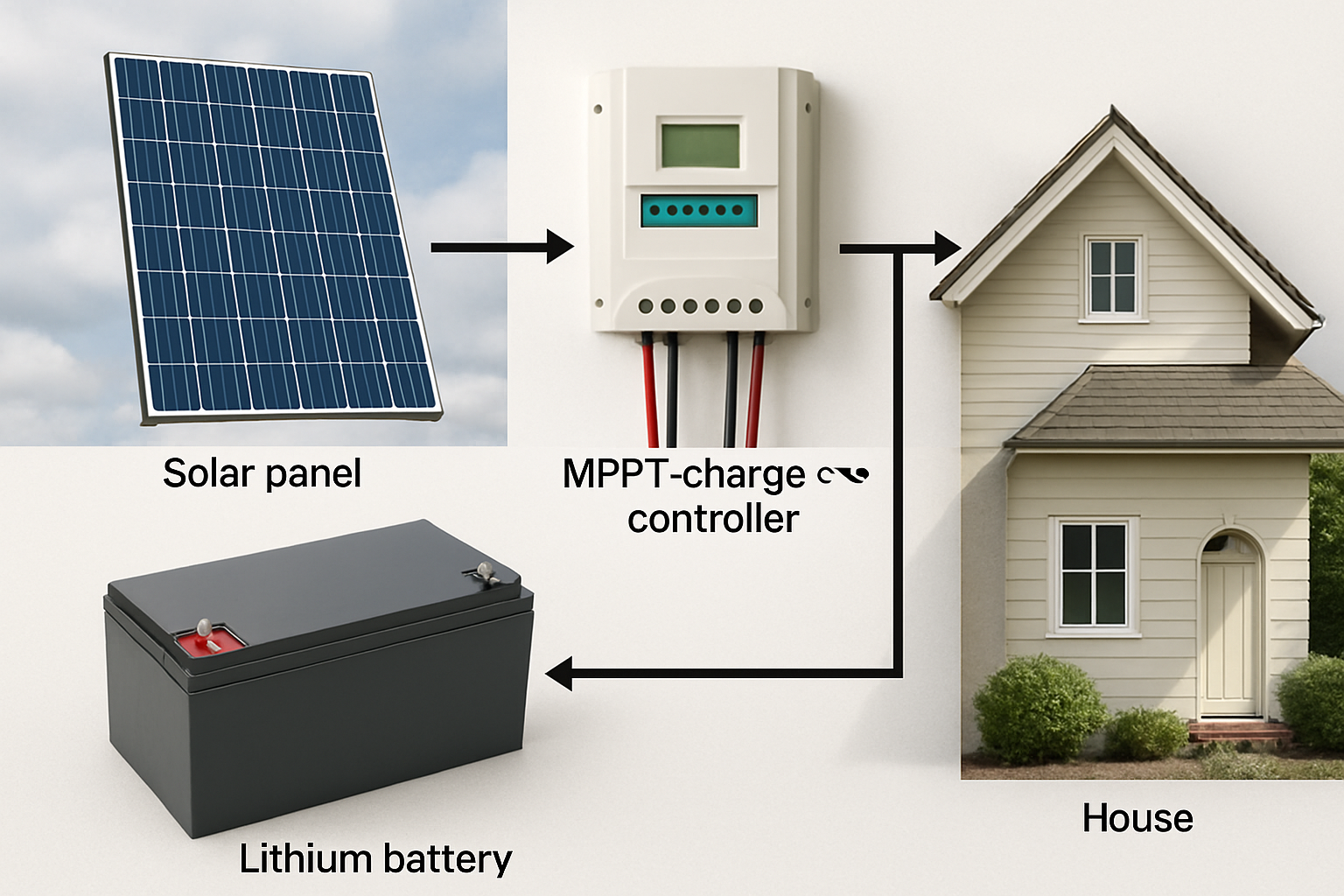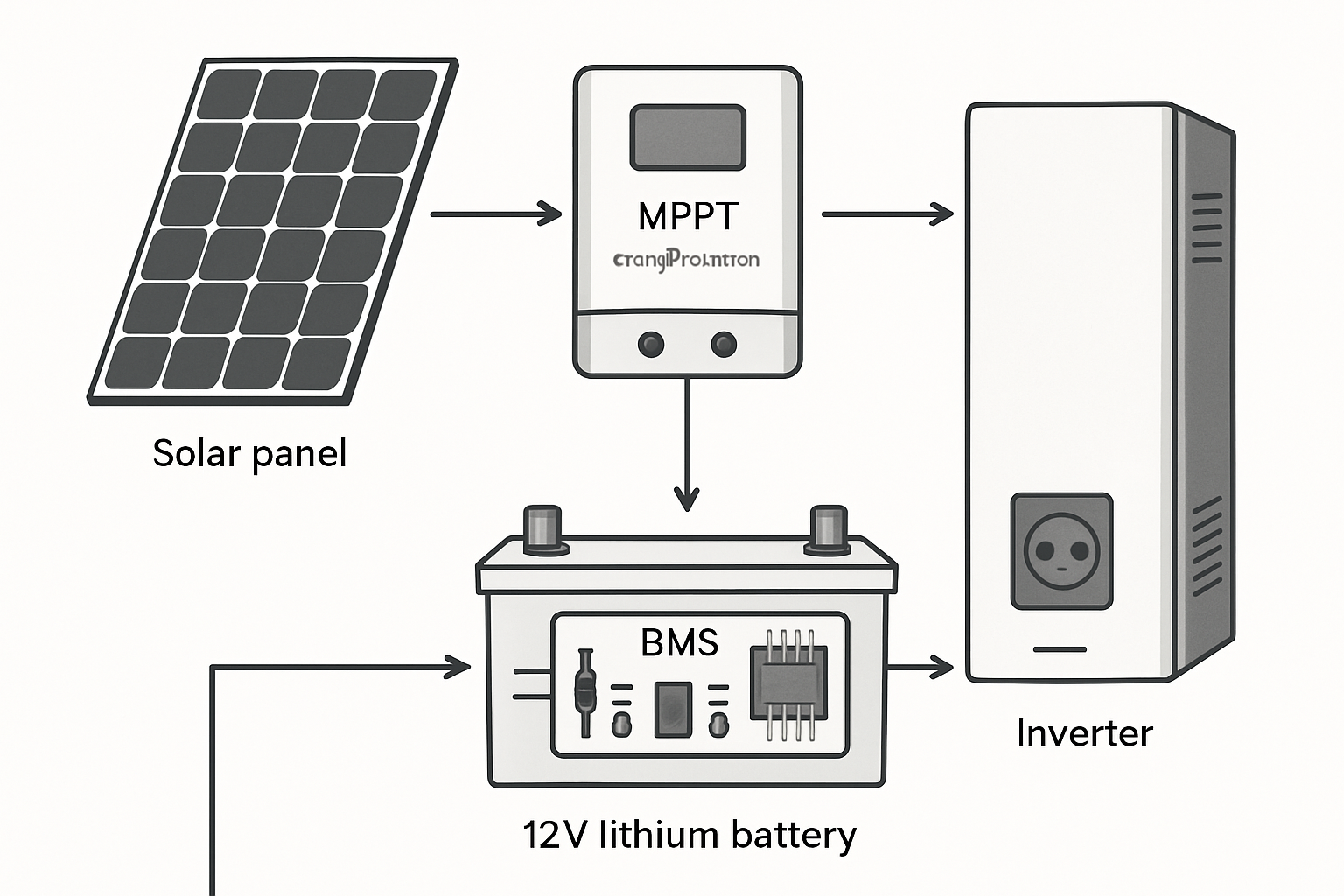In any solar power system, the charge controller is the crucial link between the solar panels and the battery bank. It regulates the voltage and current, protecting the battery from overcharging and ensuring longevity. But not all charge controllers are created equal. This analysis examines the tangible benefits of upgrading from a basic Pulse Width Modulation (PWM) controller to a more sophisticated Maximum Power Point Tracking (MPPT) controller, showcasing how this change can significantly boost overall system efficiency.
Understanding the Core Technologies: PWM vs. MPPT
Choosing the right charge controller is fundamental to maximizing your solar investment. The two predominant technologies, PWM and MPPT, operate on different principles, leading to substantial differences in performance and system design flexibility.
How PWM Controllers Work
A PWM controller functions like a simple, intelligent switch. It connects the solar array directly to the battery bank and uses a rapid switching mechanism to taper the energy flow as the battery reaches full charge. This method is straightforward and cost-effective. It works best in smaller systems where the solar panel's nominal voltage matches the battery's voltage (e.g., a 12V panel charging a 12V battery). However, this direct connection forces the panel to operate at the battery's voltage, which is often far below the panel's optimal operating voltage, leading to a loss of potential power.
The Advanced Approach of MPPT Controllers
An MPPT charge controller is a more advanced power electronic device. Instead of simply connecting the panel to the battery, it features a smart DC-to-DC converter. This technology constantly tracks the solar panel's maximum power point—the ideal combination of voltage and current that yields the most energy. It allows the panel to operate at its peak voltage, then efficiently converts the excess voltage into increased charging current. This process is especially effective when the panel voltage is much higher than the battery voltage, a common scenario in modern, efficient setups.
A Quick Comparison
The differences become clear when comparing the two technologies side-by-side.
| Feature | PWM Controller | MPPT Controller |
|---|---|---|
| Efficiency | 75-80% | 95-99% |
| System Voltage Flexibility | Limited (Panel and battery voltage must match) | High (Can use higher voltage panels) |
| Performance in Cold/Cloudy Conditions | Moderate | Excellent |
| Cost | Lower | Higher |
| Best For | Small, simple systems with matched voltages | Medium to large systems seeking maximum power harvest |
The Upgrade in Action: A Practical Case Study
To illustrate the real-world impact, consider a common off-grid setup for a remote cabin, initially equipped with a PWM controller.
The Initial Setup: A System with a PWM Controller
The original system consisted of a 400-watt solar array (two 200W panels with a Vmp of 18V), a 12V 200Ah lithium iron phosphate battery pack, and a basic PWM charge controller. During peak sunny days, the system performed adequately. However, on overcast days or during the winter months, the battery struggled to reach a full charge, leading to reduced power availability. The PWM controller was unable to harness the full potential of the panels, especially when their voltage fluctuated with changing light conditions.
The Transition to an MPPT Charge Controller
The PWM unit was replaced with an MPPT charge controller rated for the system's amperage. The physical swap was straightforward, but the strategic advantage was immediate. The MPPT controller allowed the solar panels to operate at their peak power voltage of 18V, instead of being dragged down to the battery's charging voltage (around 13-14V). The controller efficiently converted this 'extra' voltage into more charging amps for the deep cycle lithium battery.
Quantifying the Performance Gains
After the upgrade, the system's daily energy harvest increased by an average of 25%. On cold, sunny winter days, the improvement was even more pronounced, approaching 30%. This is because solar panels produce higher voltage at lower temperatures, a bonus that PWM controllers cannot capture. This efficiency gain meant the battery charged faster and more completely, providing more reliable power year-round. The system became more resilient, a key goal for achieving energy independence.
Key Factors Driving MPPT's Superior Efficiency
Several technical advantages contribute to the superior performance of an MPPT charge controller, making it a cornerstone of modern solar energy storage solutions.
Maximizing Power in Variable Conditions
Sunlight is rarely constant. Clouds, shade, and time of day cause a solar panel's output voltage and current to fluctuate. An MPPT controller's algorithm continuously adjusts to find the new maximum power point, ensuring that every available watt is harvested. As noted by the International Energy Agency, efficient system design and operation are crucial for an affordable energy transition, and MPPT technology is a prime example of this principle in action. You can read more in their report, Integrating Solar and Wind.
The Cold Weather Advantage
Solar panels are tested at a standard temperature of 25°C (77°F). In colder climates, their voltage output increases. A PWM controller sees this higher voltage but cannot use it, effectively wasting potential energy. An MPPT controller, however, captures this high voltage and converts it into a higher charging current, providing a significant performance boost when energy is often needed most for heating and lighting.
System Design Flexibility
MPPT controllers decouple the solar array voltage from the battery voltage. This allows for innovative system designs, such as using higher-voltage and less expensive grid-tie panels to charge a 12V, 24V, or 48V battery bank. According to the U.S. Department of Energy, advanced power electronics that adjust voltage can boost overall system efficiency and lower material costs. This concept is explored in the EERE Success Story—Small Wonder. Using a higher voltage array also reduces the current flowing through the wires, allowing for smaller, less expensive cables over longer distances with less power loss.
Is an MPPT Upgrade Right for Your System?
While an MPPT controller offers clear advantages, the decision to upgrade depends on your specific system and goals.
When to Make the Switch
An upgrade to an MPPT charge controller is highly recommended if your system meets one or more of these criteria:
- The solar array is larger than 200 watts.
- The nominal voltage of the solar array is higher than the battery bank's voltage.
- You live in an area with frequent cloudy weather or cold temperatures.
- You are looking to maximize every watt of power to achieve true energy independence.
Cost-Benefit Analysis
MPPT controllers have a higher upfront cost than their PWM counterparts. However, this cost should be viewed as a long-term investment. The increased energy harvest can pay for the difference in cost over a relatively short period. In many cases, the efficiency gains mean you can meet your energy needs with a smaller solar array or battery bank, potentially offsetting the controller's price. A comprehensive understanding of component interplay is vital, as detailed in this ultimate reference on solar storage performance.
Installation and Compatibility
When upgrading, ensure the new MPPT controller is correctly sized for your system. Pay close attention to its maximum input voltage (Voc) and maximum charging current to ensure it is compatible with your solar array and battery bank, whether it's a standard lead-acid or a high-performance 12V 100Ah LiFePO4 lithium battery. The digitalization of energy components, as discussed by the IEA in its China Power System Transformation report, is making system integration and management more efficient than ever.
A Forward Look at System Optimization
Upgrading from a PWM to an MPPT charge controller is more than just a component swap; it's a strategic move toward a more efficient, resilient, and powerful solar energy system. By harvesting up to 30% more power from the same solar panels, an MPPT controller ensures your investment works harder for you. This single upgrade can lead to faster charging, better battery health, and greater energy security, putting you firmly on the path to sustainable energy independence.
Frequently Asked Questions
What is the main difference between an MPPT and a PWM charge controller?
An MPPT (Maximum Power Point Tracking) controller is more advanced. It converts excess voltage from your solar panels into extra charging current, significantly boosting efficiency. A PWM (Pulse Width Modulation) controller acts more like a simple switch, connecting the panels directly to the battery, which can result in power loss.
How much more efficient is an MPPT controller?
An MPPT controller can be 15-30% more efficient than a PWM controller. The efficiency gain is most noticeable in cold weather, during low-light conditions (morning, evening, cloudy days), and when the solar panel's voltage is significantly higher than the battery's voltage.
Is it always worth upgrading to an MPPT controller?
For most modern solar energy storage systems, especially those over 200 watts or using high-performance batteries like a 12 volt lithium battery 100ah, the upgrade is highly beneficial. The long-term energy gains typically outweigh the higher initial cost. For very small, simple systems (e.g., a single panel for trickle charging), a PWM might suffice.
Can I use any solar panel with an MPPT controller?
MPPT controllers offer great flexibility. They allow you to use higher voltage solar panels (like those designed for grid-tie systems) to charge a lower voltage battery bank (e.g., 12V or 24V). Always check the controller's maximum input voltage (Voc) and current specifications to ensure compatibility with your solar array.





Leave a comment
All comments are moderated before being published.
This site is protected by hCaptcha and the hCaptcha Privacy Policy and Terms of Service apply.